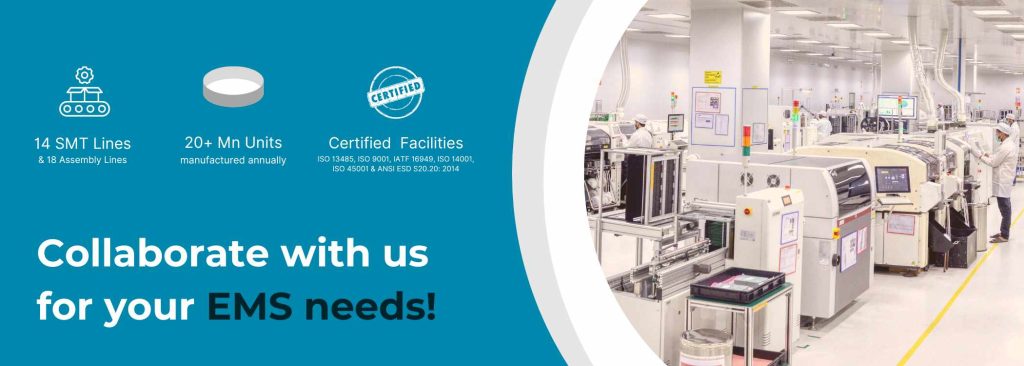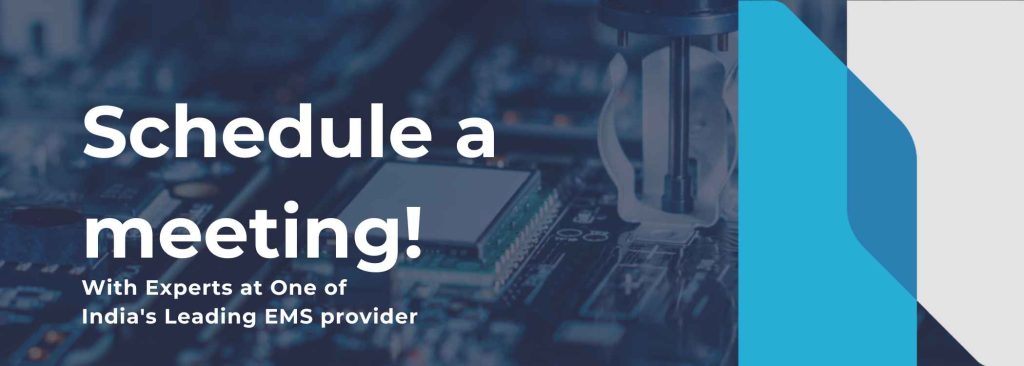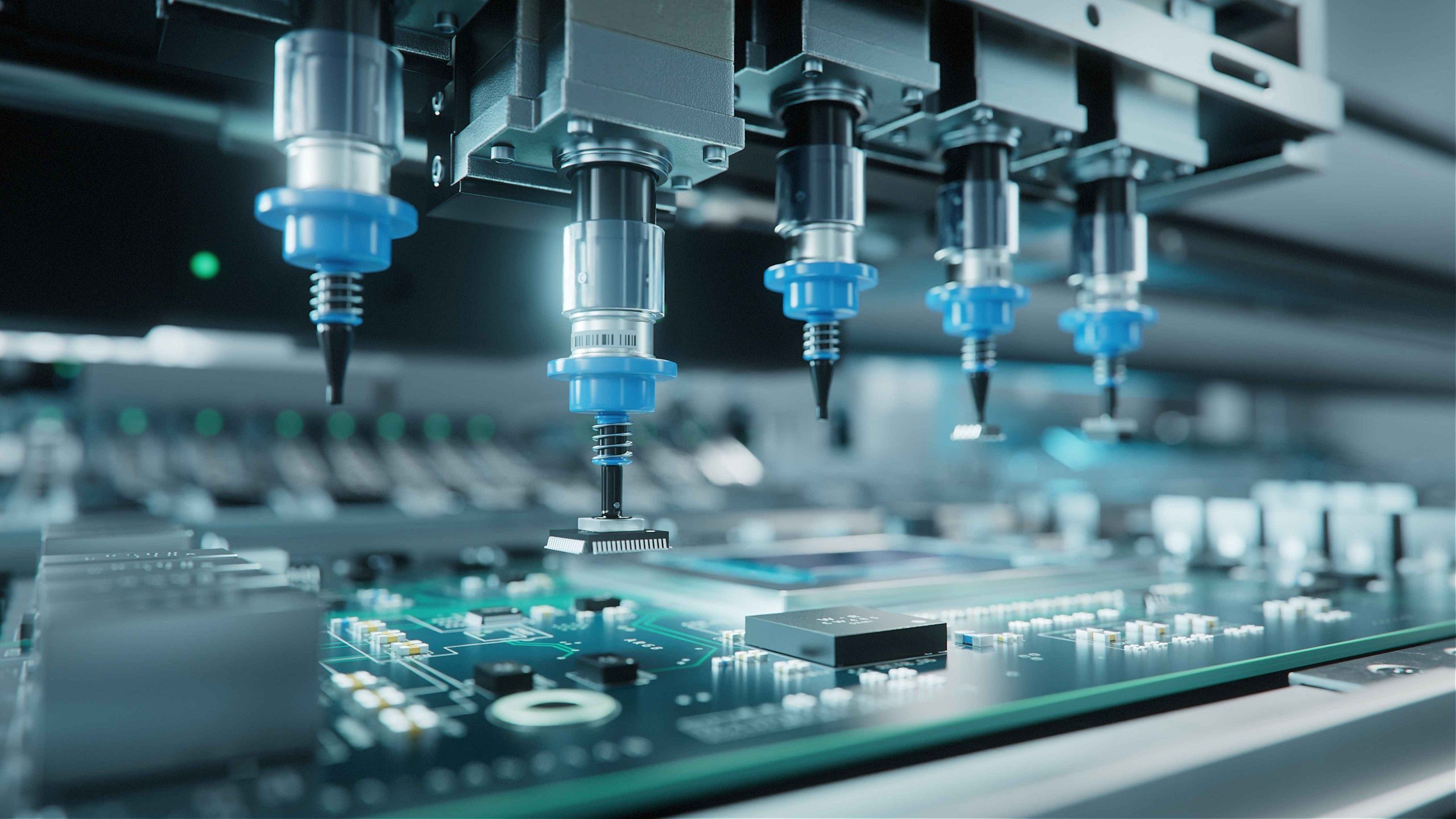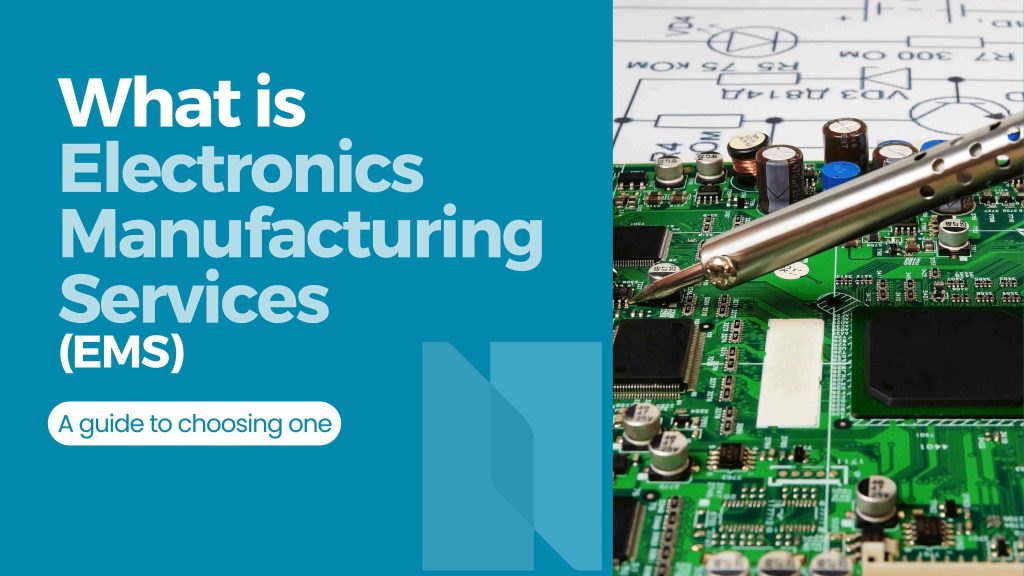
Take a moment to look around you. It’s hard to ignore the abundance of electronics in our lives.
From smartphones and laptops to smart home devices and wearable tech, these products have become an integral part of our daily routines.
But have you ever wondered how they are made in such large quantities while maintaining their superior quality?
As we venture into this topic, we’ll encounter some new terms: EMS, ODM, and OEM.
Don’t worry if they sound unfamiliar at first.
We’ll break them down for you and explore their meanings in greater detail. By the end of this blog post, you’ll have a solid understanding of these concepts, and you’ll be amazed at the complexity behind the scenes of electronics manufacturing. Whether you are a business looking to outsource your electronics production or an individual interested in understanding the complexities of Electronics manufacturing services (EMS), you’ve come to the right place.
We will dive deep into the world of electronics manufacturing and reveal the secrets behind everything from EMS to ODM to OEM.
Table of Contents:
-
- What exactly is Electronics Manufacturing Services (EMS)?
- Provide an overview of the Electronics Manufacturing Services industry
- What are the advantages of partnering with an Electronics Manufacturing Services Provider?
- How are Electronics Manufacturing Services (EMS) utilized across various industries?
- What capabilities do Electronics manufacturing services providers possess?
- What are the key tools and technologies that drive the EMS industry?
- What sets apart product companies manufacturing their own products from EMS providers?
- Explain the concept of High-Mix-Low-Volume (HMLV) electronics manufacturing?
- What are the critical questions to consider when selecting an EMS partner?
- What are the common challenges confronted by the electronics manufacturing industry?
- What are the current trends and opportunities in electronics manufacturing?
What is Electronics Manufacturing Services (EMS)?
Electronics Manufacturing Services (EMS) refers to outsourcing manufacturing processes and production of electronics components and products to specialized third-party companies.
Electronics Manufacturing Services (EMS) refers to outsourcing manufacturing processes and production of electronics components and products to specialized third-party companies.
In order to understand it, let’s use an example: When a company has a brilliant idea for a new product, they rely on Electronics Manufacturing Services providers to turn their designs into reality by developing the final product. EMS providers can be contacted at various stages of the manufacturing process from hardware design to mass manufacturing.
Electronics Manufacturing Services industry overview
In recent years, the electronics industry has experienced a remarkable boom, fueled by various factors such as technological advancements, growing demand for electronic devices, and the need for cost-effective manufacturing solutions. According to Fortune Business Insights electronics manufacturing services market is projected to reach USD 797.94 billion by 2029, growing at a CAGR of 6.8% in the forecast period (2022-2029). The Asia-Pacific region dominates the global EMS market, playing a pivotal role in its growth and development.
What are the benefits of working with an Electronics Manufacturing Services Provider?
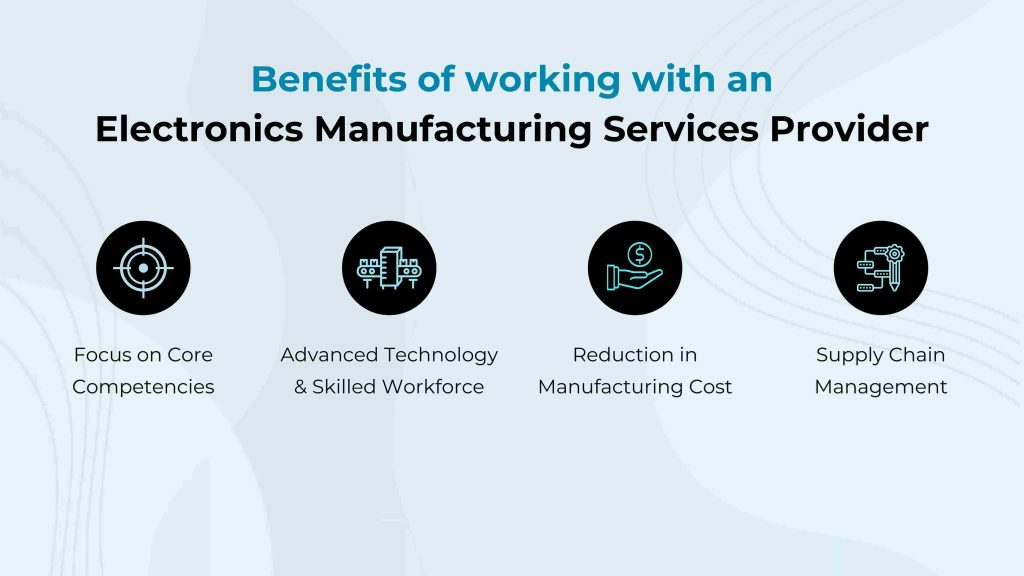
We have covered the market scenario but what about the benefits?
Why should a company be working with an EMS provider?
EMS companies offer OEM providers many benefits, including:
Focus on Core Competencies: Partnering with an EMS provider streamlines the manufacturing process, saving significant time and effort and leaving businesses free to concentrate on strategic planning and growth.
Access to Advanced Technology & Skilled Workforce: Electronics manufacturing services providers offer a winning combination of advanced technology and a skilled workforce.
Improve Productivity and Reduction in Manufacturing Cost: Collaborating with EMS providers avoids hefty facility investments while cutting down production cost.
Supply Chain Management & Inventory Management: EMS companies manages various aspects and intricacies of the supply chain, from sourcing components to inventory management and logistics.
Now let’s cover the various industries where EMS companies have established themselves as growth drivers.
Applications of Electronics Manufacturing Services (EMS) Across different Industries
Medicine: EMS providers assist Medical Original Equipment Manufacturers (OEMs) in creating medical devices and equipment. From initial concept to final assembly, EMS companies offer the necessary services to ensure top-notch quality and compliance.
Logistics: In logistics, EMS companies employ their expertise in creating advanced tracking and sensing devices. Logistics devices from Napino Digital Solutions such as asset trackers & beacons are revolutionizing the logistics industry with cutting-edge innovation.
Smart Home: EMS companies are at the heart of creating a more connected and intelligent living environment by developing smart fans, lights, AC, curtains, etc.
Telecommunications: In the telecommunications industry, EMS providers play a crucial role. With intricate devices and networks, their expertise becomes essential. Delving into the industry, you’ll find various products like routers, edge gateways, and outdoor access points.
Consumer Electronics: From cutting-edge smartphones that fit in our pockets to sleek wearables that transform our lifestyles the consumer industry relies heavily on EMS providers.
After exploring the advantages and practical uses of EMS providers, let’s delve into the array of offerings EMS providers extend.
What are the capabilities of Electronics manufacturing services providers?
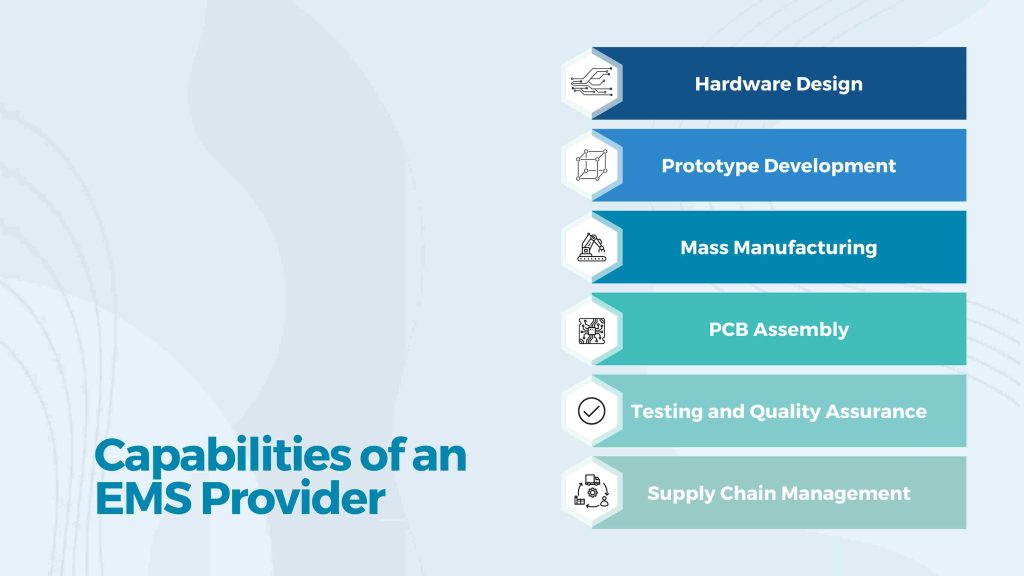
Electronics Manufacturing Services providers, including Napino Digital Solutions, offer a wide range of capabilities to meet the dynamic demands of original equipment manufacturers (OEMs).
The key capabilities of EMS providers include:
1. Hardware Design: EMS providers offer design support services. They collaborate with Original Equipment Manufacturers (OEMs ) to develop and optimize product designs, including PCB layouts, component selection, and engineering support.
2. Prototype Development: EMS companies like Napino Digital Solutions also excel in rapid prototyping, creating functional prototypes to test and validate new product concepts.
3. Mass Manufacturing: EMS providers are well-equipped to handle high-volume production runs because of their infrastructure & facilities. Mass Manufacturing is made possible due to setups & processes that have been tested through years of operation.
4. PCB Assembly: In the process of PCB manufacturing, Printed circuit board (PCB) assembly involves soldering electronics components onto PCBs using surface mount technology (SMT).
5. Testing and Quality Assurance: Conducting rigorous testing procedures, such as functional testing, in-circuit testing, and environmental testing, to ensure the reliability and quality of electronic products.
6. Supply Chain Management: Managing the procurement of components, materials, and parts from suppliers, ensuring timely availability and cost efficiency.
7. System Integration: Integrating various electronics components and subsystems including mechanical assembly, and firmware/software installation is called system integration.
The Tools & Technologies Powering the EMS Industry
Let’s take a deep dive into the world of tools used by EMS industries:
Computer-aided design (CAD) software enables precise product design and faster prototyping, reducing time-to-market.
Manufacturing execution systems (MES) streamline production processes, enhancing efficiency and quality control.
Enterprise resource planning (ERP) systems optimize supply chain management, ensuring timely delivery of components.
Product lifecycle management (PLM) software enables efficient management of product development from conception to obsolescence.
These technologies have transformed the market while enabling seamless collaboration, innovation, and meeting customer demand with superior quality.
Difference between product companies manufacturing their own products VS EMS providers
Product companies and Electronics Manufacturing Services (EMS) providers are two key players in the electronics industry, each with distinct roles and responsibilities. Understanding the differences between these entities is essential for businesses looking to navigate the manufacturing landscape effectively.
| Product Companies | Electronics Manufacturing Services (EMS) Provider | |
| Definition | A company that designs and manufactures products under its own brand name or trademark. | A company that offers specialized manufacturing services to companies and produces products on behalf of them. |
| Product Ownership | Owns the products it manufactures. | Does not own the products; acts as a contract manufacturer for the company. |
| Design and Development | Responsible for product design, research, and development. | May offer design and engineering support, but the primary focus is on manufacturing based on the designs. |
| Manufacturing Facilities | May have their own manufacturing facilities or may outsource production to EMS manufacturing partners. | Has specialized manufacturing facilities equipped to handle a wide range of electronic products. |
| Product Lifecycle Management | Responsible for the entire product lifecycle, from concept to end-of-life. | May offer comprehensive lifecycle support, including repair and refurbishment. |
Understanding these differences helps businesses make informed decisions when choosing an EMS partnership.
What is High-Mix-Low-Volume (HMLV) electronics manufacturing?
High Mix Low Volume (HMLV) manufacturing is a strategy tailored for industries that require the production of a wide variety of products in smaller quantities.
Unlike traditional mass production, where large quantities of a single product are made, HMLV focuses on efficiently manufacturing different product versions while maintaining quality and cost-effectiveness.
In HMLV manufacturing approach provides flexibility and agility, allowing electronics manufacturers to quickly adjust to changing market demands. By leveraging these capabilities, Napino Digital Solutions caters to various industries, providing tailored solutions to meet customer requirements effectively at every stage of the electronic product development and manufacturing process.
Questions to ask when deciding on an EMS partner.
In today’s dynamic and competitive business landscape, partnering with a reliable Electronics Manufacturing Company is crucial for businesses. If you are considering to outsourcing manufacturing needs to EMS companies, you should have answers to the following questions.
1. What is the EMS provider’s industry experience and expertise?
When evaluating potential EMS manufacturing companies, it’s crucial to delve into their industry experience and expertise. A well-established EMS partner with years of experience indicates has a proven track record of successfully handling various manufacturing projects.
2. What types of electronic products does the EMS provider specialize in manufacturing?
EMS providers may have varying specializations. So understanding their industrial expertise will help align their capabilities with your specific product requirements.
3. Can the EMS provider manage the entire manufacturing process from design to distribution?
A comprehensive EMS manufacturing company should offer end-to-end services, from product design and prototyping to final assembly and distribution.
4. Does the EMS provider hold any industry certifications or accreditations?
Industry certifications, such as ISO 9001 or ISO 13485 (for medical devices), are indicative of an EMS provider’s commitment to excellence and adherence to stringent quality standards.
5. Can the EMS provider handle both small-scale and large-scale production volumes?
The EMS partner should have the capacity to handle changing production volumes to meet current and future demand effectively.
Don’t let your manufacturing needs hold you back from success – partner with an (EMS) provider based on experience, capabilities, quality control, and sustainability for a fruitful partnership.
Challenges faced by the electronics manufacturing industry
The electronics manufacturing industry faces various challenges that companies must navigate to ensure successful operations. Since we have already explored the advantages of EMS. Let’s explore some key challenges of electronics manufacturing.
1. The electronics industry heavily relies on a global supply chain, making it susceptible to disruptions caused by natural disasters, geopolitical issues, or unexpected events like the COVID-19 pandemic.
2. Management of E – waste and reducing its impact on the environment.
3. With the increased demand for electronic devices, there is a constant risk of component shortages, leading to production delays and higher costs.
4. Adhering to stringent industry regulations and certifications demands meticulous documentation and compliance procedures.
5. The industry faces a shortage of skilled labor, particularly in specialized areas, affecting production capacity.
Overcoming these challenges requires the integration of the value chain and advanced technology.
Electronics manufacturing trends and opportunities
The electronics manufacturing industry is witnessing transformative trends and opportunities that are shaping its future. Some significant trends include
Industry 4.0 and Smart Manufacturing: Integration of smart technologies, data analytics, and automation is revolutionizing manufacturing processes, optimizing efficiency, and reducing costs.
Green Manufacturing: Sustainable and eco-friendly practices are gaining traction, with businesses embracing green manufacturing to meet environmental regulations and consumer preferences.
AI and Robotics: Artificial intelligence and robotics are enhancing precision and efficiency in manufacturing processes, enabling high-level automation.
Electric Vehicles (EVs) and Renewable Energy: The surge in electric vehicles and renewable energy solutions is fueling demand for advanced electronics components and energy storage solutions.
By leveraging these trends and opportunities, manufacturers can remain competitive and innovative in a rapidly evolving industry.
Conclusion
Electronics Manufacturing Services (EMS) providers play a pivotal role in shaping the success of businesses in the fast-paced and competitive electronics industry. Choosing the right EMS partner can significantly impact product quality, time-to-market, and overall business success.
At Napino, we are committed to being your trusted EMS partner, offering a comprehensive range of capabilities to meet your unique manufacturing requirements. Our state-of-the-art facilities, industry expertise, and strict quality control measures ensure that your electronic products are delivered with utmost precision and reliability. Whether you are a startup, a small business, or an established company, our flexible and scalable solutions cater to your specific needs.
Let’s embark on a journey of success and growth with Napino Digital Solutions in the electronics industry. Contact us today to explore the endless possibilities and expand your electronic manufacturing capabilities.
About Author:
Vinay Solanki has 17+ years of experience in business development, sales, strategy, partner management, marketing, and engineering within domains such as manufacturing, telecommunication, computing, and investment banking. He is currently AVP & Head – Napino Digital Solutions and has worked at Lenovo, Bharti Airtel, Goldman Sachs, and TCS. Vinay holds an MBA from IIM Ahmedabad and is the founder of the world’s 3rd largest IoT community IoT NCR with 8000+ members. He is recognized as a global top 20 thought leader in IoT and analytics by Thinkers 360. He is a TEDx speaker and member of NASSCOM, DoT TEC as well author of Your-Story, EFY, IoT Central, and international media.


